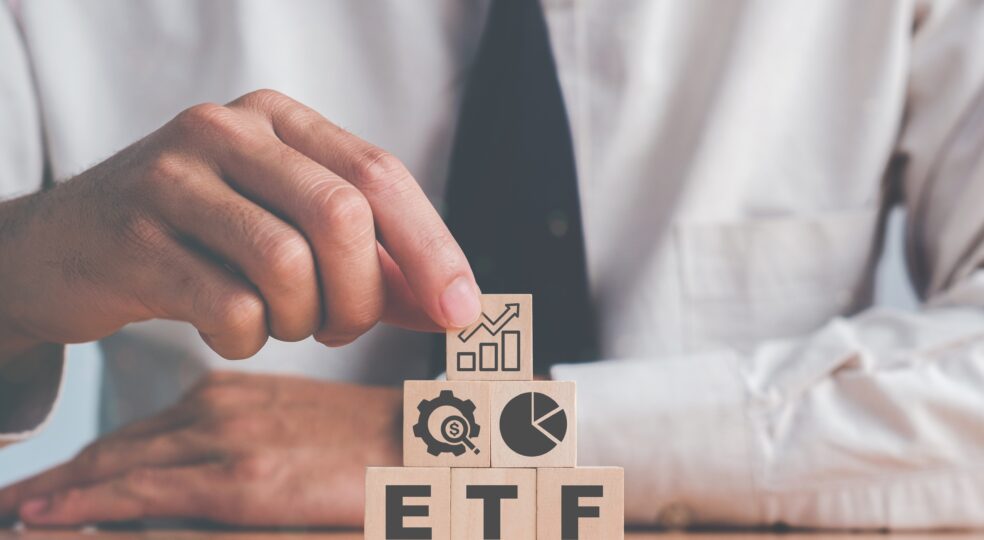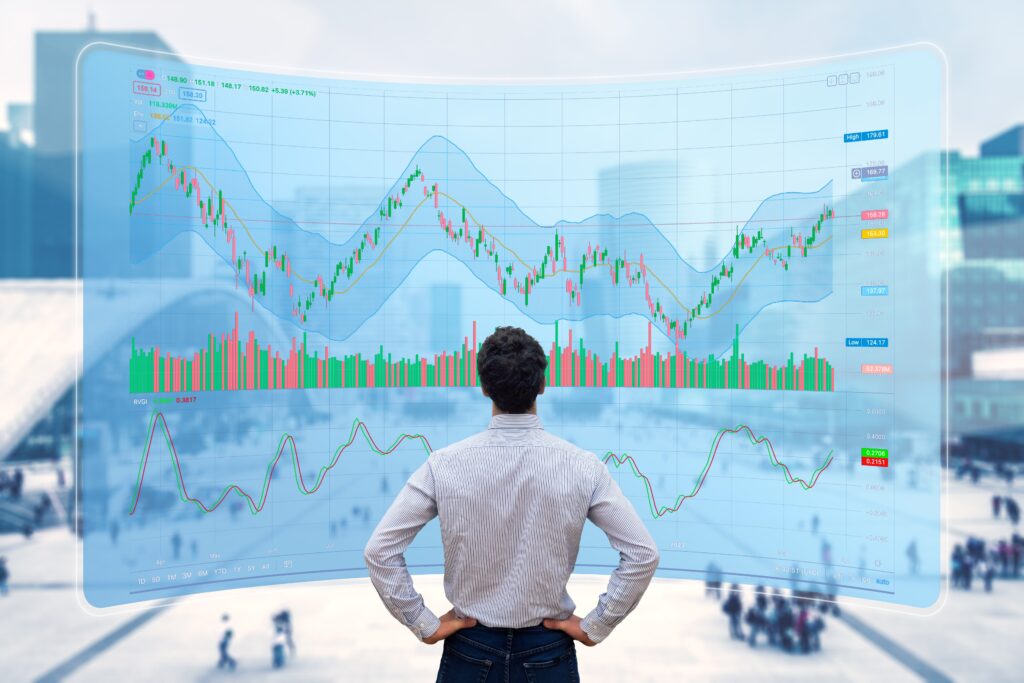
Are you looking for a lucrative form of investment for your money, but don't dare to speculate on the stock market? ETF funds may be just the thing for you. They help you to build up your assets over the long term with shares. The expected return is similar to that of most stock investors.
The abbreviation "ETF" means "Exchange Traded Fund". It is therefore an exchange-traded fund. With this form of investment, other investors pay into a pot with you. The ETF funds are index-linked, for example to the DAX. If the DAX rises, then the value of your investment also rises.
With ETFs, you invest in several listed companies. The ETFs track their performance. In contrast, when you buy shares, you invest in a specific company.
In active fund management, the fund manager generates the highest possible returns through targeted decisions, for example on the choice of the appropriate time to sell or buy or on the selection of individual stocks. This is the conventional form of fund.
The ETFs are based on passive fund management. The aim is to achieve average performance measured against the index. The costs for management are much lower here. ETFs are always exchange-traded index funds that track a stock market index, for example the MSCI World or DAX. These fund units are traded on the stock exchange in the same way as individual shares.
In addition to stock indices, it is also possible to track a bond index, for example REXP. The REXP refers to the investment performance of German government bonds. This is made up of interest and price changes. The ETF portion develops almost parallel to the respective index. However, management fees and transaction costs are deducted from your return.
Like all forms of investment that are subject to price fluctuations, ETFs harbor a high potential return, but also a certain risk. Investing your entire equity in ETF funds is therefore not advisable. You can accumulate a handsome fortune this way, but you also have to accept losses. In general, investing in ETFs is safer than investing in conventional equity funds due to their wide diversification.

ETF funds offer numerous advantages over actively managed mutual funds and other types of investments, but they also have disadvantages. First, the advantages:
Investing via ETF funds is associated with lower costs. The fees are about up to 0.8 percent of the assets, while actively managed funds are due about 1.5 to two percent.
Another advantage is the Diversification. With ETFs, you can invest cost-effectively and easily in different asset classes, such as equities, commodities, real estate or bonds. If you combine different asset classes with each other, you reduce the risk through the broad diversification.
ETF funds are easier to sell than other mutual funds. ETFs are traded on the stock exchange, which is possible several times a day. With traditional mutual funds, this works only once a day. You run the risk of missing the redemption date.
Another plus point is transparency. ETF funds track a well-known index, so information is available online at any time. In many cases, the fund company informs you every day about the exact composition of the portfolio. With conventional investment funds, you usually only retrieve the ten largest portfolios.
Like all investment funds, ETF funds are part of the special assets. Your shares are kept separate from the assets of the respective fund company. If the custodian bank or the company becomes insolvent, your ETF funds are not affected.
Many ETF funds are not based on a maximally broad and favorable investment strategy. They are often focused on specific themes and industries. Therefore, caution is advised when choosing ETFs.
Equity ETFs are also subject to price fluctuations. Changes in value are difficult to calculate. You must therefore expect periods of loss.
As already mentioned, risk diversification is enormously important. Both passively and actively managed funds are subject to the legally enshrined obligation to reduce risk. Investing in many different securities is ideally mandatory. ETFs offer the advantage that risk diversification is usually greater than with actively managed funds, but you should still pay attention.
Avoid themed ETFs. Fund companies are always advertising new ETFs that pick up on current trends. These can be clean energy, private equity, rare earths or crypto ETFs, for example. However, these types of investments are more for speculators. If you are looking for a solid Investment strategy theme ETFs are not suitable for you.
Choose ETF funds with reference to broad market indices. Ideally, the package should include stocks from different countries and industries. For example, the MSCI World Index includes about 1,500 companies from about 24 developed countries. The FTSE All-World and MSCI All Country World indices also include companies from emerging markets. Using these indices provides you with a basis for a long-term and broadly diversified investment strategy.
The fund volume is also important. Only choose ETF funds with a volume of at least 500 million euros. The lower the volume, the greater the risk that the company will close or merge the fund.
Ultimately, running costs also play a role, as these reduce the return. With ETFs, these are generally low.
Dividends from the companies traded on the stock exchange flow into your ETFs. If you choose bond ETF funds, you will receive interest payments from the issuers of the money bonds. Generally, ETFs differ in the way they manage income.
With distributing ETF funds, you receive dividends and interest once a quarter or once a year. The money usually ends up in your custody account. The share price of the ETF fund decreases by the amount of the distribution. You reinvest the payout or use it for other purposes.
If you opt for accumulating ETFs, the income is reinvested in the purchase of fund units. The money remains in the ETF fund. Here, the current income is omitted.
ETFs offer you the chance to invest in different asset classes, such as stocks, commodities or bonds in different industries and regions. The selection is large and therefore confusing. ETF ratings make the decision easier. There are now various rating systems for evaluating or assessing funds.
In the ranking, the listing is made according to the quality. At the top of the list are the best offers. The rating refers to a specific country, to Europe or the whole world. Ideally, funds with the same investment objectives are grouped in one category. The focus is on the risk-adjusted return in relation to a mostly multi-year observation period.
For ETF funds, the rating is less widespread and many fund rating houses do without it. A free ETF rating is offered by the Berlin-based Scope Group. This is based on a catalog of criteria that assesses index, product and information quality. Because ETF funds track the underlying index, there are no major changes from the basic index. The only differences are in trading liquidity and administration and management costs, among other things.

Investing in ETF funds is easy even for a layman. You don't need any special knowledge of the stock market.
There are two ways to purchase ETF funds. Either you go to a fund company or directly through an exchange. If you go through a bank or an independent fund broker, you will have to pay an issue surcharge.
If you buy ETFs via an exchange, you pay the order fees listed in the bank's price list. The amount depends on the execution venue. These are, for example, direct trading, Xetra or the Frankfurt Stock Exchange. The purchase via the stock exchange is associated with lower costs than if you purchase the ETFs with an issue surcharge.
Savings plans with ETF funds are designed for long-term investment. You regularly invest a fixed amount, for example 100 euros. The money goes into the purchase of shares in an ETF fund. An ETF savings plan is suitable for private investors who are not very familiar with shares and other securities, but still like to profit from a return. As a rule, there are no fixed terms, so you can act flexibly.
Financial advisors usually work for a commission, which they receive from the fund providers for the brokerage. With ETF funds, there is no such commission. Therefore, many investment advisors are not interested in making ETFs palatable to you. Independent fee-based advisors are an exception.
To build up your assets, it is important that the type of investment really suits you. Are you willing to take the risk and settle for a lower but stable return? happythen funds, whether actively or passively managed, are not necessarily right for you.
If you are planning to buy real estate or make a major purchase in the near future, it is also better to steer clear of ETFs. The same applies to retirement provision, because price developments can never be predicted exactly.

